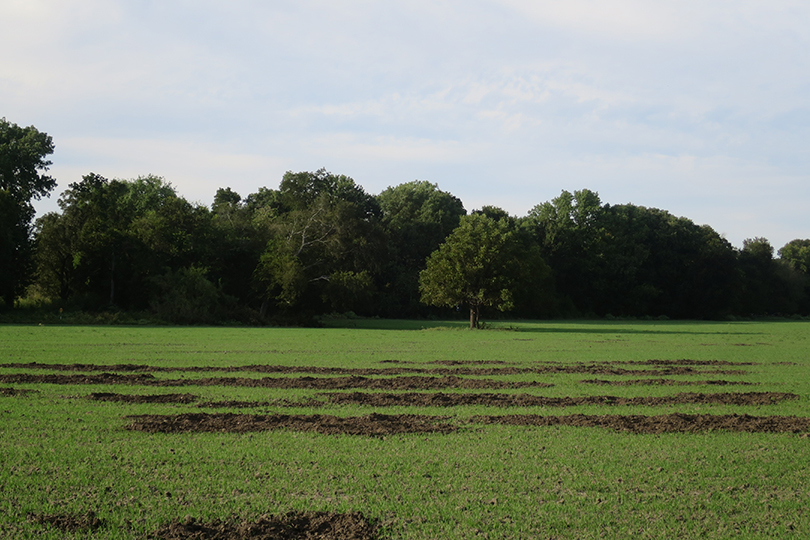By Julie Tomascik
Editor
Damaging and destructive—feral hogs continue to wreak havoc on Texas farms and ranches.
Conventional methods help control the growing population, but they are not enough. Each year, landowners are still set back despite their best efforts, and new tools are needed to help mitigate the damage.
That’s what Texas Farm Bureau outlined in comments submitted in late September to the U.S. Department of Agriculture’s Animal and Plant Health Inspection Service, Wildlife Services.
The state’s largest farm and ranch organization evaluated the toxicant HOGGONE®.
“We need and support development and approval of new tools, including toxicants like HOGGONE, in our fight to control the feral hog population in Texas,” Tracy Tomascik, associate director of Commodity and Regulatory Activities, wrote. “Feral hogs have become an endemic problem, and our state’s farmers and ranchers are unduly burdened by their growing numbers and destructive behavior.”
Texas A&M AgriLife Extension Service estimates feral hogs can be found in 230 out of the 254 counties in the Lone Star State, causing an estimated $52 million annually in damage to farms and ranches.
“The ecological toll is devastating and of great concern,” Tomascik wrote. “Texas watershed authorities report feral hogs as a significant source of contamination of our state waters, and if left uncontrolled, their negative environmental impact will only increase. Their devastation affects wildlife populations that include threatened and endangered species as they are subjected to daily predation by feral hogs.”
HOGGONE is a new bait that uses sodium nitrite. After consumption, hogs lose consciousness, and death follows rapidly from oxygen depletion to vital organs.
TFB stressed the importance of allowing the use of all products possible to combat the destructive feral hogs. But the active ingredient in HOGGONE has adverse effects to domestic livestock.
“Cattle represent the largest agricultural segment in Texas, and research shows they are susceptible to nitrite intoxication,” Tomascik wrote.
Label restrictions that protect livestock should be required when using this product, Tomascik noted.
Feral hogs are a Texas-sized problem that’s growing exponentially with each litter.
“Despite the best efforts through trapping, hunting, aerial shooting and state incentivized depopulation programs, [stakeholders] have failed to keep the population at a manageable level,” he said.


How about the state put a bounty on there head….problem solved.
Bounty would help. Do not use poison.
If a farmer could operate a remote control trap from his phone, catch 10-20 hogs at a time, and pay $20/ month for the data plan needed, then you have a solution. All you need is about $1500 initial investment in materials and a willingness to learn. I have a company called Pig Patrol LLC, and my facebook page is “@oinkoinkboom”. I will post how to videos for you to work from. Let’s get em. (Building a metal 7ft drop gate for under $500 in materials and testing this weekend.)
Ps- i make money on pigs we trap as a service and by selling the hogs by the pound. I will gladly teach farmers how to do this at no charge.
There are bounties but each sow has 7-8 piglets I a short amount of time. They need a birth control first then it will be easier to kill them off
I am interested in getting in touch with ranchers with a serious hog problem. I am a hunter from Pennsylvania, with world class qualifications and would like to do culling hunts for feral hogs to help the ranchers. It seems that the Outfitters have taken over the hunting of hogs, and to trophy hunters that may serve them well. But I am more concerned about the plight of the Ranchers. I am not interested in Trophies. I have exceptional firearms with suppressors and nite sites and I am a Hi Master long range Marksman, and Army Vet. I have most recently done culling hunts in Montana for Coyotes and Prairie Dogs, and Have hunted South Africa for Baboons and rogue animals. If there are any Ranchers who may be interested in my proposal, Please contact me at coachteno@verizon.net. I will provide all ammo and equipment and pay for all of my expenses but will not pay Trophy fees. Thank You for your help, Tom Eno